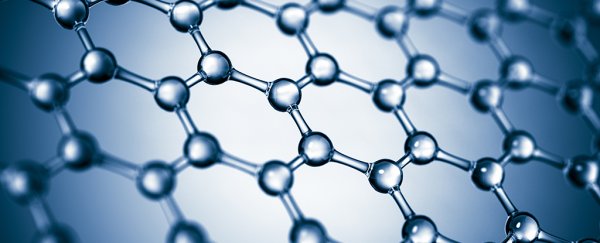Scientists are now closer than ever to being able to use graphene as a superconductor – to conduct electricity with zero resistance – making it useful for developing energy efficient gadgets, improving medical research, upgrading power grids, and much more besides.
The key to the new approach is heating a silicon carbide (SiC) crystal, itself a superconductor, until the silicon atoms have all evaporated. This leaves two graphene layers on top of each other in a way that, in certain conditions, offers no resistance to electrical current.
A similar dual-layer approach was also successfully used to turn graphene into a superconductor earlier this year. The difference here is the layers don't have to be carefully angled on top of each other, which should make it easier to reproduce at scale.
Technically speaking, the scientists have found a flat band structure where electrons don't meet with resistance, so they can flow freely regardless of their energy level.
Researchers have studied two-layer graphene before, as it's a well-known semiconductor. But this time researchers spotted something previously unnoticed in the layers.
"It is an overseen property of a well-studied system," says one of the researchers, Dmitry Marchenko from the Helmholtz-Zentrum Berlin (HZB) institute in Germany. "It was previously unknown that there is a flat area in the band structure in such a simple well-known system."
The scientists determined that the interaction between the graphene layers, as well as the effects of the silicon carbide lattice, were jointly responsible for creating the flat band.
They used a special technique called angle-resolved photoemission spectroscopy or ARPES to determine how the electrons were behaving at a very high resolution. That was made possible by the BESSY II synchrotron particle accelerator at HZB.
Another requirement for superconductivity is reaching a certain energy level known as the Fermi energy level. The two layers of graphene tested here got close enough to that point that the researchers think it could be tweaked to fit relatively easily.
"We can predict this behaviour with very few parameters and could use this mechanism to control the band structure," says one of the team, Oliver Rader from HZB.
While we've seen graphene act as a superconductor before, this latest study brings it closer than ever to being something that will properly scale up and be useful in everyday life. Some previous successes were achieved by adding other metals to graphene, but here it's doing all the work on its own.
The scientists say the technique shows promise for working at elevated temperatures too, unlike the ultra-low temperature conditions seen in previous efforts to make graphene act as a superconductor, and upon which this research is based.
Graphene continues to surprise us with the wonderful ways it can work: the one-atom-thick layer of graphite is ultra-thin yet harder than diamond and stronger than steel. It has potential in everything from solar power to water purification.
In its original state it's already an excellent conductor of electricity, and now it seems we're getting closer to the ultimate in conductivity – and it's thanks to some of the most advanced scientific instruments we have.
The research has been published in Science Advances.
